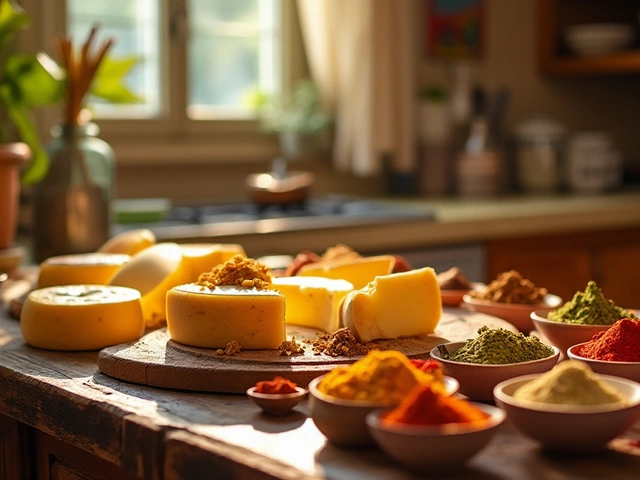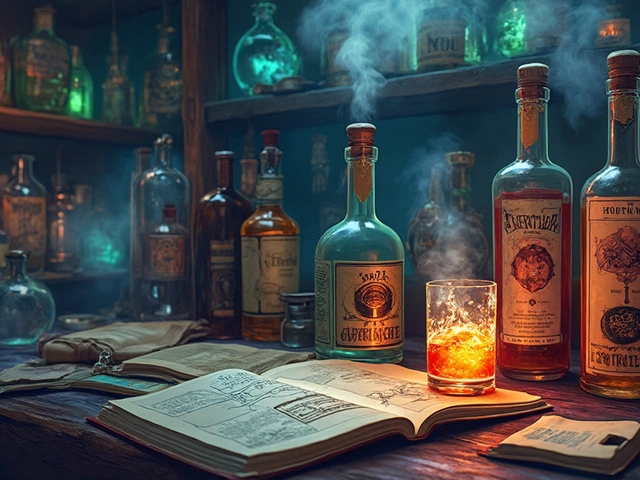
You might be standing at the bar, eyeing the gin and tonic menu but thinking about the glass of chilled Sauvignon Blanc you had with a friend last weekend—then comes that familiar voice in your head asking, "Which one is going to show up later on my hips?" The truth is, the calorie counts in your favourite drinks aren't as obvious as you'd like. Sometimes, we're almost tricked into thinking a clear spirit means more diet-friendly and that wine is the treat you save for weekends. But does it add up? There's a world of nuance hiding in those drinks—more than you’d expect from what’s on the label.
Alcohol, Calories, and Your Body: The Not-So-Straightforward Story
Few people realise alcohol calories are sneaky—they don't spark the same fullness you get from food. Instead, your body treats alcohol more like a VIP guest, shunting everything else aside in a rush to process it. Mind you, calories from alcohol (called 'empty calories' for a reason) add up just as much as ones from cake or crisps, but these come with hardly any nutritional benefit—no vitamins, no minerals, just pure fuel most of us never burn off. One standard shot of gin (that's 25ml) clocks in at 59 to 64 calories, and that’s neat, with nothing added. Compare that to a modest 125ml glass of white wine, usually around 80 to 90 calories. But real life rarely matches these "textbook" measures. When was the last time you saw someone pour EXACTLY 125ml of wine at home? It’s much more likely that home servings spill up to 175ml, pushing that calorie count up to 130–140 per glass.
Here’s where it gets really interesting. The calorie difference between gin and wine changes fast depending on how you drink it. A standard gin and tonic isn’t just a dash of gin—it’s also tonic, which might have as many calories as the spirit itself. Pick a regular tonic? Now the number can leap to 120–150 calories per drink—basically, as much as a large glass of wine! Opt for slimline tonic—now you’re looking at only about 64 calories, nearly half the wine equivalent.
Alcohol percentage is key, too. Wine’s ABV (alcohol by volume) usually sits around 11-14%, while gin often hits 37.5–40%. Since alcohol is almost twice as calorie-dense as carbs or protein (at 7 kcal per gram), higher alcohol means higher calories per measure. So, shot-for-shot, neat gin is more calorie-packed than an equal shot of wine. Of course, nobody sips wine by the shot, and gin gets diluted with mixers, so real-world drinking evens the score.
Want to get nerdy? Here’s a quick comparison of typical servings, calories, and ABVs in everyday pours:
| Drink | Serving Size | Calories (kcal) | ABV (%) |
|---|---|---|---|
| Gin (neat) | 25ml | 59-64 | 37.5–40 |
| Gin & Regular Tonic | 25ml gin + 150ml tonic | 120-150 | ~6-7 |
| Gin & Slimline Tonic | 25ml gin + 150ml slimline tonic | 59-70 | ~6-7 |
| White Wine | 125ml | 80-90 | 11-13 |
| Red Wine | 125ml | 85-95 | 12-14 |
| White Wine (175ml) | 175ml | 130-140 | 11-13 |
As you can see from the table, context is everything. Go for a gin and slim tonic, and you might actually sip fewer calories compared to an overflowing goblet of Chardonnay. Choose a double gin and sugary mixer, though, and you’re neck and neck with wine—or even tipping over. My personal rule at home: actually measure—don’t guess.

Sneaky Sugars and Add-Ons: What Your Glass Really Hides
People often obsess about sugar in wine, fearing all bottles are sugar bombs. But most dry wines actually contain much less than you'd think—often less than 1g of sugar per glass, especially when you stick to drier styles like Sauvignon Blanc, Pinot Grigio, or good dry reds. Dessert wines and cheap, mass-produced bottles? Well, the sugar can creep up with those.
Gin—on its own—contains basically no carbs or sugar. Where you get into trouble is what you mix it with. Classic tonic water? Packed with sugar, sometimes 15g per 200ml serving (that’s more than a chocolate biscuit). Swap that regular tonic for a slimline or zero-sugar version, and you dodge the entire problem. Oddly, it’s the "healthier" fruit and botanical tonics that sometimes pile on hidden sweetness, and most cocktails rely on sweet liqueurs, syrups, or juice. A typical gin-based cocktail, like a Tom Collins or Bramble, often hides 10-20g of sugar and well over 200 calories. Ever spotted a French 75 on a menu? Gin, sugar syrup, lemon, and sparkling wine—it’s pretty much grown-up lemonade with a boozy punch.
Wine is simple: what you pour is what you drink. But with gin, the whole drink changes depending on the mixer, the pour size, and even the garnish (that Instagram-perfect slice of orange isn’t the problem, but syrups and splashes of elderflower cordial absolutely are). It gets confusing fast, and bars won’t always have nutrition info handy. So, if you’re keeping an eye on sugar, the real game is knowing your mixers and steering clear of fruit juices or full-sugar tonic.
When it comes to hidden calories, cocktails are the real minefield. Those trendy gin “balloons” that took over every beer garden in Edinburgh? They're not fooling anyone—sometimes they hold double shots and loads of mixer—meaning twice the calories. Same rule with wine: watch out for supersized glasses; they’ll sabotage your ‘just the one’ promise quickly. If you’re someone who loves their drink sweet and fizzy, don’t feel obligated to drink it neat for health—just go easy, and maybe try half-and-half with sparkling water.
- If you’re at a bar and unsure about mixers, always ask for slimline tonic, soda water, or even on the rocks—these are your lightest bets.
- Opt for dry wines rather than sweet or off-dry ones; they're lower in residual sugar.
- Measure your pours at home—it’s very easy to accidentally double servings, especially in those massive wine goblets everyone seems to own now.
- Skip those eye-catching, ready-made G&T cans—check the small print for sugar and calorie stats; you might be surprised.
- Remember: it’s rarely the gin or wine itself that’s the big killer. The calories sneak up through what you add or how much you pour.

So, Which Is More Fattening—and What Are the Smarter Choices?
There's a straight answer if you compare equal servings of neat gin to wine: gram for gram, gin is denser in calories, thanks to its higher alcohol content. But nobody spends the night sipping 25ml of gin with nothing else in it—it’s about the way we drink these tipples in the real world. Most people have a single or double measure of gin with a mixer, while wine comes in at least a 125ml glass, but more often 175ml or even larger in restaurants.
Over a whole evening, you might put away three gin and tonics or three glasses of wine. If you pick regular tonic, the gin route might clock as many or more calories as the wine, especially if you lean towards larger measures or fancier mixers. But if you swap to slimline tonic or soda, gin becomes the leaner choice. Swirl in some fun by adding cucumber or fresh herbs—that's all flavour, zero guilt.
Here’s a table, just for fun, showing the cumulative calorie count of three typical drinks at home or out:
| Drink | Three Servings (Total Calories) |
|---|---|
| Gin & Regular Tonic | 360–450 |
| Gin & Slimline Tonic | 180–210 |
| White Wine (175ml each) | 390–420 |
Watching your weight isn’t about ditching your favourites, but being a bit clever. Fancy a night on the town? You won't sabotage your goals just by ordering gin or wine—just stay conscious of your pours, and what’s in your glass. When in doubt, alternate your drinks with a sparkling water or bring the ABV down with some ice and fruit.
The bigger issue is that when we drink, we're prone to ordering chips, forgetting portion sizes, and blowing the calorie budget, not just from the drinks themselves but from the snacks and kebabs that follow. And yes, that late-night 'chippy' counts! If you’re looking to keep track, plenty of apps (like MyFitnessPal) let you search for drinks so you can get a sense of what you’re actually putting into your body. Personally, I use a kitchen measuring jug for wine at home—glamorous, maybe not, but honest. For gin, I go for slimline tonic, loads of ice, and botanicals to play up the flavour. Keira thinks adding rosemary or pink peppercorns looks fancy, but I know it’s just a way to feel like I’m treating myself while keeping things a bit lighter.
So, is gin more fattening than wine? It depends—what you add, and how much you pour, matter just as much as what you start with. Don’t let the myths put you off enjoying what you like, but go for the options that suit your body, your week, and your taste for life, not just your taste buds.





Categories